Your Guide to Planning, Planting, and Growing Astilbes
Astilbes brighten shady gardens with their brilliant midsummer color. The plume-like flowers are held high above attractive, deep green foliage. Flower colors vary from white, pink and deep red, through soft lavender and violet. All are attractive to butterflies and beneficial insects. Learn how to get the most from these carefree shade-loving perennials.
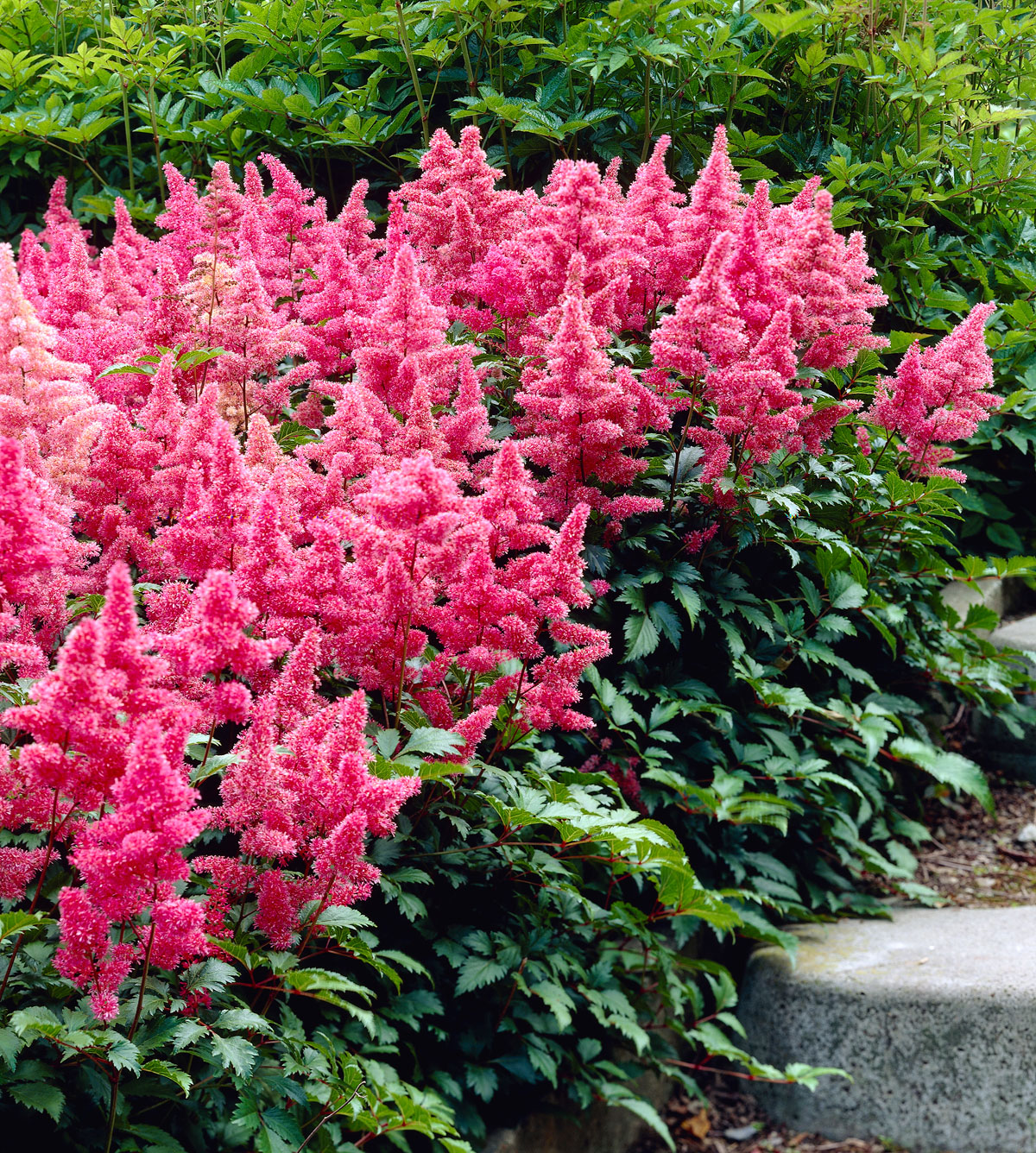
Start with a Better Plant
When you compare two astilbe plants side by side, it’s easy to see differences in quality. Longfield Gardens supplies grade #1 plants (shown at far left) with strong, healthy root systems. The bigger the plant, the faster it will settle into your garden and the sooner it will flower.
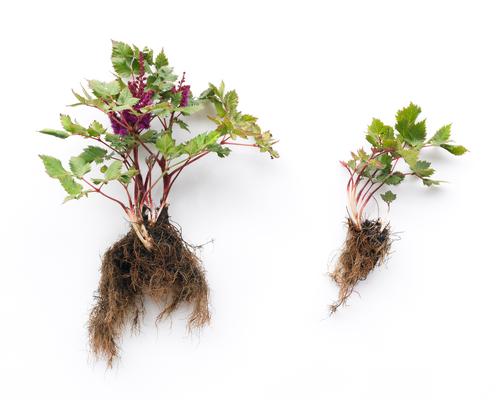
Plan For Success
Sun and Shade Astilbe perform best in partial shade, but they will also grow in full shade. In cool, northern climates, most astilbe varieties will tolerate full day sun.
Zone Astilbes are hardy perennials and will survive winters in zones 3-8. Click HERE to find your hardiness zone.
When to Plant Astilbes should be planted in spring. Cool, moist soil encourages strong root growth.
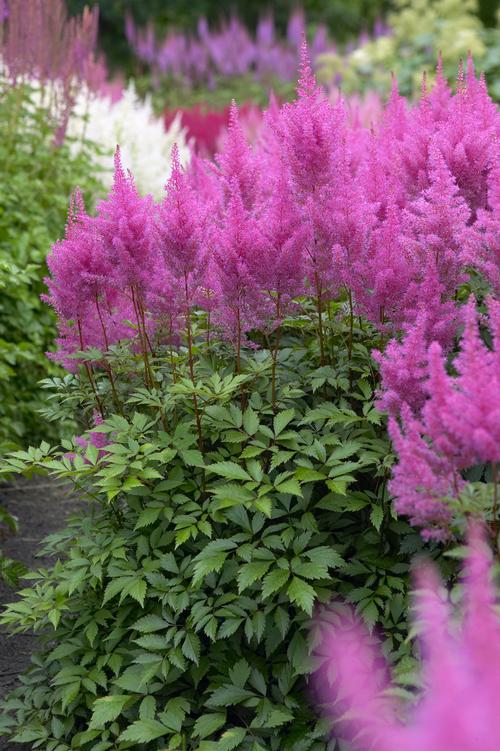
How to Plant Astilbe
Loosen the soil 12” deep. Mix in several handfuls of compost and about ¼ cup of all-purpose granular fertilizer (follow package directions).
Dig a shallow hole and put the astilbe in the hole so the crown of the plant (where the roots meet the stem) sits just below the soil line.
Cover the roots with soil, firm lightly, and water well.
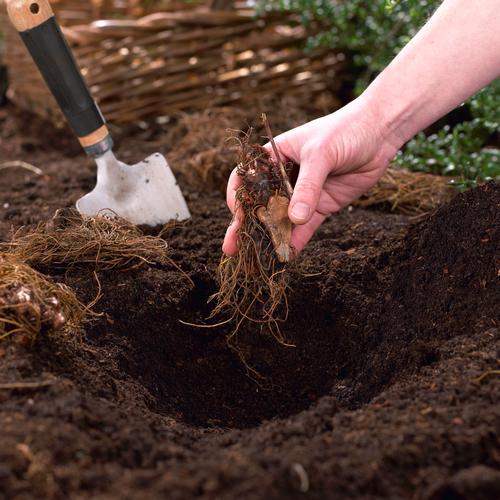
Planting Tips for Astilbe
Astilbe should be planted in well-drained soil that stays relatively moist throughout the growing season. The plants prefer soil that has a loose texture and is high in organic matter. Adding compost to the planting area will improve the soil and help it retain moisture.
After planting, mulch around the plants to reduce moisture loss and help keep the root zone cool. Mulching with organic materials such as compost, shredded bark or shredded leaves will add nutrients and gradually improve the soil’s ability to retain moisture.
Newly planted astilbes should be watered weekly for the first growing season. Like all perennials, the plants will need a little time to get established. You can expect them to begin flowering in their second year. Applying a liquid fertilizer in June and again in July will speed growth.
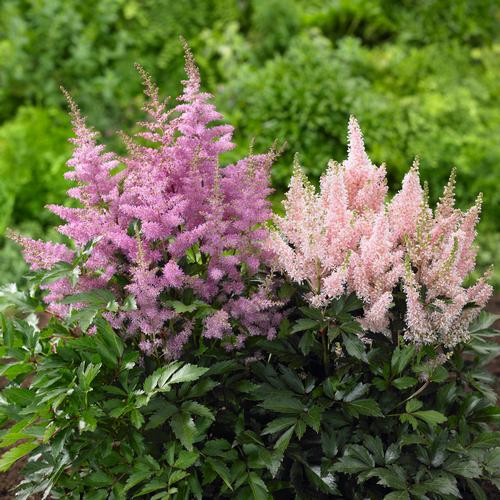
Where to Plant Astilbe
Replace a Shady Lawn: Consider converting a sparse, shady lawn area into a colorful planting of shade-loving perennials. Astilbe are polite plants that mix well with shrubs and other perennials and they flourish in the shade of deciduous trees.
Brighten a Dreary Corner: Use astilbe to light up a neglected part of your yard such as near a compost pile or along the side of an outbuilding or fence.
Line a Woodland Path: Astilbe blend well with native plants, so are good for natural settings, such as a woodland garden or beside a shady stream or pond.
Dress up a Shady Patio: Compact astilbe varieties grow very well in containers. They can be planted on their own or be mixed with shade tolerant annuals and other perennials. Locate the container in a shady spot and water regularly to ensure the soil never gets completely dry.
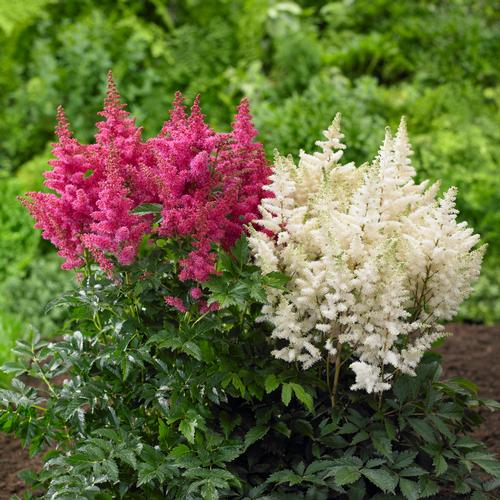
What to Expect
There are many different astilbes to choose from. Compact varieties grow just 10" high, while others can have 4-foot flower spikes. Smaller astilbes are ideal for tight spaces or the front of a flower border. They also grow well in containers. Larger ones can hold their own in a shady woodland garden or in informal plantings at the side of a pond or stream.
As with most perennials, astilbes look best when they are planted in groups of three or more plants of the same color. Weave astilbes among other shade lovers such as hostas and ferns, lady’s mantle and hellebores. Their glossy foliage stays neat and fresh-looking throughout the summer and it resists diseases and pests (including slugs and deer).
Astilbe flowers are highly attractive to bees, butterflies, and other pollinators. When the plants are in bloom, you'll be surprised to see how many insects are busy collecting pollen.
The fluffy, brightly colored flowers of astilbe can add drama and texture to summer flower arrangements. The blossoms have long, stiff stems that are easy to arrange, and they last for a week in a vase. When the plants are out of bloom, their fernlike foliage is an excellent filler for any summer arrangement.
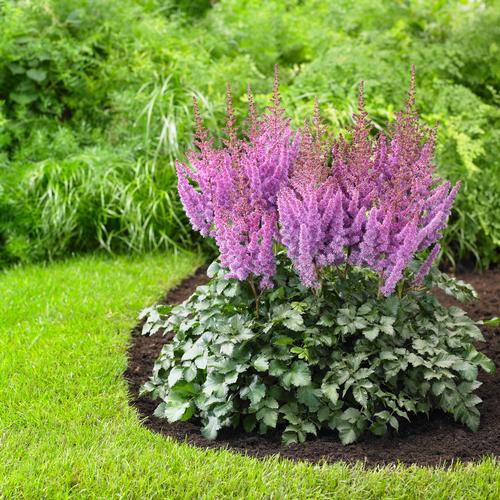
Caring for Astilbe After They Bloom
Once astilbe flowers have lost their color, the stems may be cut to the ground and removed. Alternatively, you may leave the flowers in place. The faded plumes will usually last until early winter, adding height and visual interest to your garden.
Astilbe are slow to emerge in spring, so you may not see them right away. Watch for the new shoots, which are typically dark orange or red. Before the sprouts come up, you can pull away any spent foliage and flowers. Fertilize your astilbe in spring by applying some granular all-purpose fertilizer around each plant (follow package directions).
Astilbe are relatively slow-growing plants and will bloom for many years before needing to be divided. If a plant must be moved or has outgrown its space, or if you want to make more plants from the original mother plant, do so in early spring or late fall. Use a sharp spade or knife to divide the root ball into sections. After replanting, water consistently until the roots get reestablished.
Shop for astilbe HERE.
Learn more about shade-loving plants:

